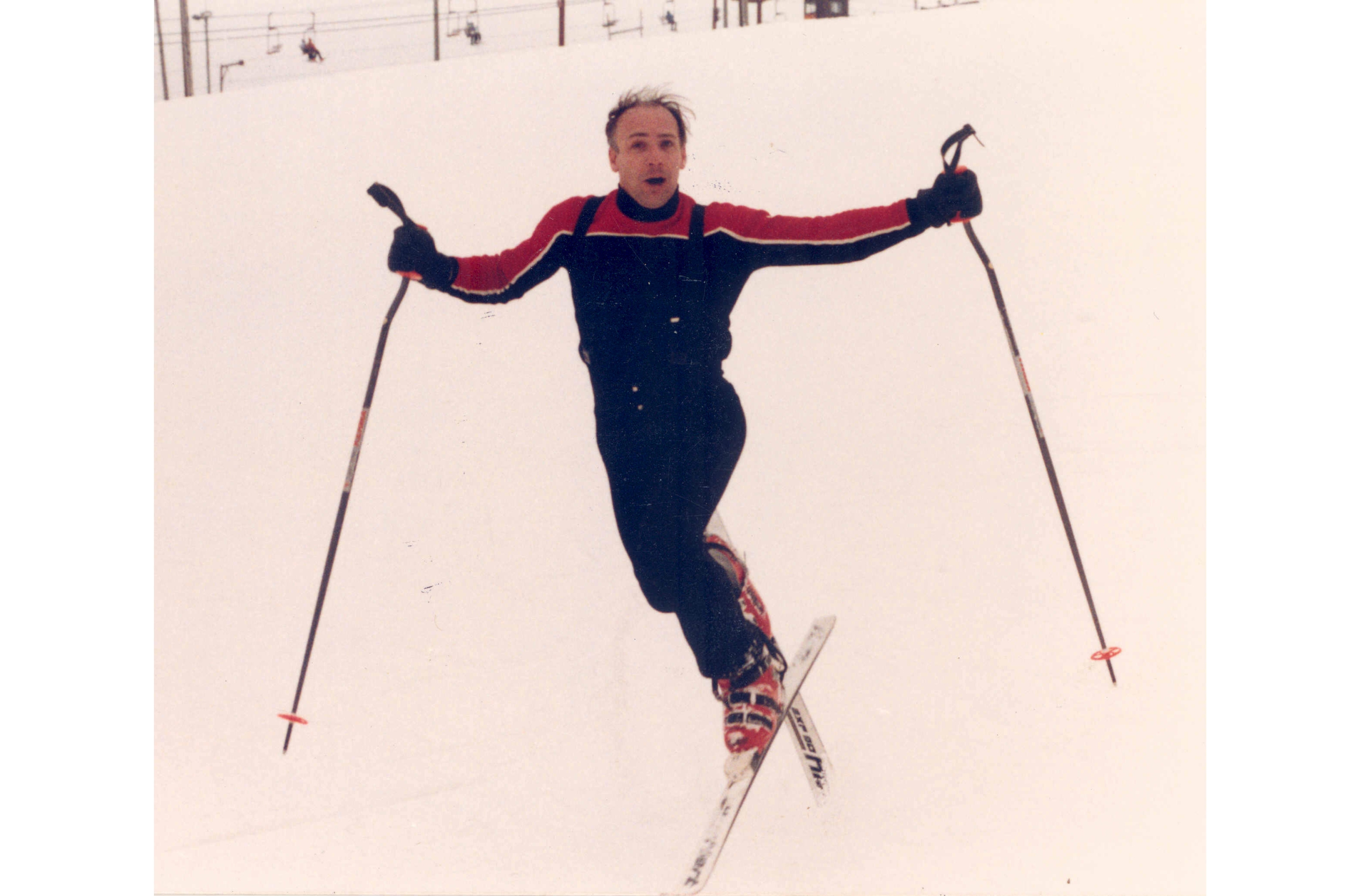32 Degrees: Get Retro and Dance on the Slopes with Ballet Skiing
It’s a New (Old) Way to Practice Fundamentals
This article, by Tom Gabrielse, appeared in the Spring 2021 issue of 32 Degrees Magazine.
If you skied in the late 1960s, 70s, and 80s, you might recall ballet skiers gracing the slopes. Or maybe you’ve watched skiers tip and turn their skis, dancing solo, as a pair, or in a group, in old ski videos. Ski ballet, along with aerials and moguls, was one of the original freestyle disciplines.
By the early 1990s, the Olympic Committee accepted moguls and aerials into the Winter Games, but ballet skiing didn’t make the cut. Popularity for ballet – also called acro – skiing waned, the public lost interest, and participation faded. But just because it lost popularity doesn’t mean it’s not fun. I invite you to experiment with spinning and grinning. You may even discover positive implications to help you improve your understanding of PSIA’s Alpine Skiing Fundamentals.
Why not it a try? Go retro and try these classic ski ballet moves.
INSIDE SKI EXERCISE
Traversing across the slope, raise the outside ski, but keep the tail of this ski close to the snow. Extend your arms and get familiar with this “expression of freedom.” Return to a traverse and repeat in the same direction.
To change direction, take the tail of the outside ski over the front of the inside ski, with the tip of this ski just off the snow. Next, pivot this unweighted ski in the opposite direction. If this is the to the left, extend the left arm to gain extra momentum in the new direction. Repeat the maneuver a couple times in each direction until you’re comfortable.
FRONT CROSSOVER
Lift the outside ski over the front of the inside ski. Briefly allow both skis to remain on the snow, with more weight on the uphill edge of the original ski. Exiting from the position, take the unweighted crossing ski across the front of the inside ski. Propel yourself in the new direction across the fall line. This exit will be familiar from the inside ski exercise.
REVERSE CROSSOVER
Balance on the outside ski, take the inside ski and extend it uphill and away from the body. Rotate the inside ski and place it alongside the outside ski. Do not pull the crossing ski straight back; this will catch the tip of the ski. Get the clearance you need. To exit, take the crossing ski back across the front of the outside weighted ski and extend across the hill with the tip first.
FRONT TIP DRAG 360
Again, take the tail of the outside ski over the front of the inside ski. The friction (drag) of the tip of the ski against the snow will start spinning you in the intended direction.
Extend your arm in the direction of spin. Turning your chin and the shoulder in the same direction will facilitate the spinning. Spinning left, left arm assist. Spinning right, right arm assist.
Ready to Dance? Let’s Go!
Blending the previous maneuvers will offers and opportunity for guided practice and helps create a mini-routine at the same time. Traversing across the hill, try this sequence and blend the movements.
- Execute a couple OF inside ski exercises.
- Now take the tail of the outside ski across the tip of the inside ski and sweep back in the opposite direction. In this new direction, perform a front crossover. Change direction again, sweeping into a reverse crossover.
- Remember the ski must be extended uphill before performing the reverse cross. Step out of the reverse crossover position back across the hill in the opposite direction.
- Take the reverse crossover position into the front tip drag 360.
From here, mix it up to create a personal expression session. Sometimes it works smoothly, other times it doesn’t. Laugh when a maneuver doesn’t work, reflect, and enjoy the journey into the lost art of ballet skiing.
How Ballet Skiing Can Help You Practice the Alpine Fundamentals
| Alpine Skiing Fundamental | Application in Ballet Skiing |
|---|---|
| Control the relationship of the center of mass to the base of support to direct pressure along the length of the skis. | Movements like the reverse crossover require that you move your center of mass over the uphill edge of the outside ski. As your center of mass moves across the ski, you release downhill. |
| Control pressure from ski to ski and direct pressure toward the outside ski. | To exit from a front crossover position, you need to tip the uphill edge of the inside ski toward the new direction. |
| Control edge angles through a combination of inclination and angulation. | Ballet skiing will boost your edge control as you practice gripping and slipping. |
| Control the skis’ rotation with leg rotation, separate from the upper body. | 360-degree maneuvers and spins require that you to rotate the skis by pivoting the feet, the legs, or both. |
| Regulate the magnitude of pressure created through ski/snow interaction. | Ballet skiing maneuvers use a continuous flow of pressuring and releasing pressure on the skis, helping you develop a stronger sense of “touch” for how your skis are moving over the snow. |
Bring Ballet Back
Ballet can help any skier, intermediate to advanced, on their path for improvement. Performed on any green run, participants can experiment and play with these moves at any resort – no superpipe needed. So, grab your short skis and long poles and bring back these retro ski moves!
___
Tom Gabrielse competed nationally in ballet skiing from 1974 to 1976. A PSIA-certified Level III alpine instructor, he teaches at Chicago Snow Studio, Wilmot, Wisconsin, and Winter Park, Colorado. In the off-season, Gabrielse is a student of sailing, surfing, and windsurfing.







